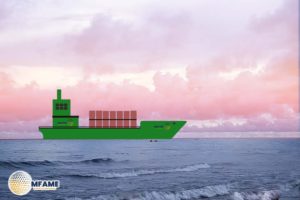- The Marshall Islands are addressing climate change by decarbonizing their shipping industry through the revival of traditional maritime practices and modern sailboat innovations.
- Wind propulsion technologies, such as rigid sails, kites, suction sails, and rotor sails, are crucial for meeting the IMO’s net-zero shipping goals by 2050.
- Innovations in wind-assisted vessels demonstrate significant potential to reduce fuel consumption and greenhouse gas emissions in cargo transportation.
The Marshall Islands, a nation heavily dependent on sea transportation, are pioneering efforts to decarbonize their shipping industry amidst the escalating challenges of climate change. By merging ancient sailing techniques with cutting-edge wind propulsion technologies, they aim to reduce emissions and set a global example, reports MIT Technology Review.
Reviving Ancient Maritime Traditions for Sustainability
The Marshall Islands have long relied on sea transport for survival. In response to the environmental crisis, initiatives like Waan Aelõñ train locals to build traditional canoes and solar-powered sailboats, such as the Juren Ae, which debuted in 2024.
These efforts aim to replace motorized vessels and significantly cut emissions.
Global Shipping’s Carbon Challenge
Shipping accounts for 3% of annual greenhouse gas emissions, with projections suggesting a rise to 10% by 2050.
As small island nations face disproportionate climate impacts, addressing emissions from this industry is urgent for global sustainability.
Wind Propulsion: A Critical Solution
Wind power offers a scalable solution to the shipping industry’s emission problem.
Studies indicate wind propulsion could reduce carbon emissions by 20%, making it indispensable for meeting IMO’s 2050 goals.
Rigid Sails: Efficiency Meets Innovation
Oceanbird’s rigid sails, inspired by airplane wings, deliver up to 10% fuel savings.
These innovative structures can be adjusted for optimal wind capture and retracted near docks, offering versatility for cargo ships.
High-Altitude Kites: Harnessing Consistent Winds
CargoKite’s UV-resistant kites fly 200-300 meters above sea level, maximizing consistent high-altitude winds.
These kites cut fuel consumption by up to 15%, proving effective for micro cargo ships.
Suction Sails: Enhanced Thrust Technology
Bound4Blue’s suction sails create a boundary layer of air, boosting thrust by 20% compared to earlier models.
Their efficiency is evident in ships equipped with this advanced wind-assistive technology.
Rotor Sails: Leveraging the Magnus Effect
Norsepower’s rotor sails use spinning cylinders to generate thrust, achieving 5%-30% fuel savings per voyage.
As the most cost-effective wind propulsion option, these sails demonstrate significant potential for widespread adoption.
A Global Path to Sustainable Shipping
The IMO’s technology-agnostic approach encourages diverse innovations to meet its emission targets.
Wind propulsion technologies are leading this transformation, combining modern engineering with age-old sailing principles.
Did you subscribe to our daily Newsletter?
It’s Free Click here to Subscribe!
Source: MIT Technology Review























